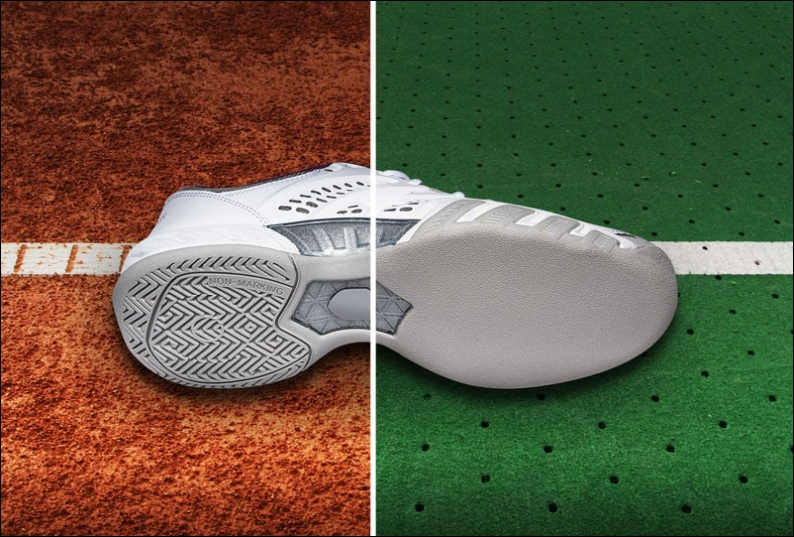
Exploring Tennis Court Surfaces: Which One is Right for You?
Tennis is a sport that requires a lot of skill, technique, and physical endurance. However, one factor that often goes unnoticed is the type of court surface that players compete on. The surface of a tennis court can greatly affect the way a game is played and can even impact the performance of players. That’s why it’s important for both professional and amateur players to understand the different types of tennis court surfaces and how they can influence the game.
Importance of selecting the right tennis court surface for your playing style
Choosing the right tennis court surface is essential for any player looking to improve their game. A player’s style of play, strengths and weaknesses, as well as physical abilities, can all be impacted by the type of surface they are playing on. For example, a clay court may favor players who rely on slow and steady shots while a grass court would benefit those with a strong serve and volley game. Therefore, it’s important for players to choose a surface that aligns with their playing style in order to maximize their potential.
Brief overview of the most common types of tennis court surfaces
Here is a brief overview of the most common types of tennis court surfaces and their characteristics:
- Clay: This surface is made up of crushed brick, stone, or shale and is commonly known as slow-paced. The ball tends to bounce higher on clay courts, allowing players more time to set up shots.
- Grass: Grass courts offer a fast pace with low bouncing balls, making it ideal for players with a strong serve and volley game. However, these courts require more maintenance and can be affected by weather conditions.
- Hard: Hard courts are considered to be a middle ground between clay and grass surfaces. They offer medium-paced games with consistent ball bounces.
- Carpet: This type of surface is mostly used in indoor facilities and provides the fastest pace of play. Players with strong groundstrokes and quick reflexes tend to do well on carpet courts.
Choosing the Right Surface for You
When it comes to choosing the right tennis court surface, there is no one-size-fits-all solution. It ultimately depends on a player’s individual preferences and playing style. Here are some things to consider when selecting a court surface:
- Personal Style of Play: As mentioned earlier, understanding your own strengths and weaknesses as a player is crucial in determining the best surface for you. Consider what type of shots you excel at and which surface would enhance those skills.
- Physical Abilities: The type of court surface can also play a role in the physical demands on a player’s body. For example, hard courts are known to be more taxing on the joints compared to clay courts, which may be more forgiving.
- Adaptability: It’s important for players to be able to adapt to different surfaces in order to excel in any playing condition. While it’s important to choose a surface that suits your style of play, it’s also beneficial to practice and compete on a variety of surfaces.
Factors to consider when selecting a tennis court surface (e.g., playing style, injuries, location)
Making a decision about the right tennis court surface is not just about playing style and physical adaptability. Other factors such as susceptibility to injuries, geographical location, and weather conditions also play a significant role. In this section, we delve into these considerations to provide a comprehensive understanding of what to consider when choosing the ideal tennis court surface for you.
- Playing Style: As mentioned before, different surfaces favor different styles of play. Consider your strengths and weaknesses as a player when choosing a court surface.
- Injuries: If you have a history of injuries or are prone to certain types of injuries, it’s important to choose a surface that will be more forgiving on your body. For example, players with knee problems may benefit from playing on a slower surface like clay.
- Location: The location of the court can also play a role in selecting a surface. For example, if you live in an area with frequent rain, a hard court may be more suitable as it is less affected by weather conditions compared to grass or clay courts.
Examples of professional players who excel on certain surfaces due to their playing style
Different tennis court surfaces favor different styles of play, and the world of professional tennis offers several examples of this. Many top-ranked players have managed to excel on specific surfaces that complement their playing style. These players have leveraged the unique characteristics of the court surfaces to their advantage, underlining the importance of the surface-player synergy in the game of tennis.
- Rafael Nadal: The “King of Clay” has dominated on clay courts throughout his career due to his strong baseline game and ability to move swiftly on the surface.
- Roger Federer: Known for his elegant and effortless style of play, Federer excels on grass courts with his precise serves and graceful volleys.
- Novak Djokovic: With a well-rounded style of play, Djokovic has found success on all surfaces. However, he has a particularly strong record on hard courts due to his quick and powerful shots.
- Serena Williams: The power and aggression in her game make Williams a formidable opponent on any surface, but she has had the most success on hard courts with her strong serves and groundstrokes.